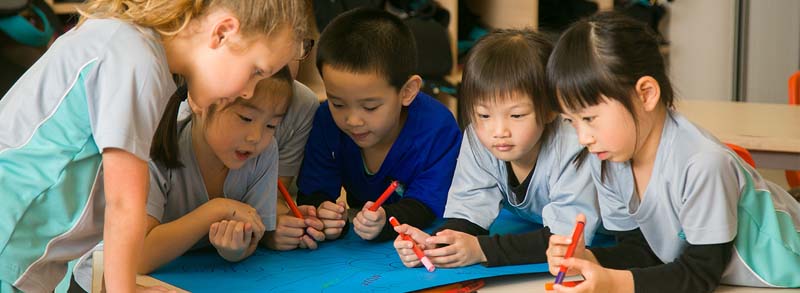We use cookies to improve your online experiences. To learn more and choose your cookies options, please refer to our cookie policy.

Bringing MIT’s philosophy into the classroom MIT's mens et manus philosophy, or mind and hand in Latin, galvanised Darren Sutton to design a makerspace that would inspire students and staff alike. Find out how his trip to MIT with Nord Anglia Education students influenced him to build a creative space that would bring his school community together and get everyone to think outside the box with hands-on learning.

MIT's mens et manus philosophy, or mind and hand in Latin, galvanised Darren Sutton to design a makerspace that would inspire students and staff alike. Find out how his trip to MIT with Nord Anglia Education students influenced him to build a creative space that would bring his school community together and get everyone to think outside the box with hands-on learning.
It’s clear to see how mens et manus, the motto for MIT meaning mind and hand in Latin, is embedded in everything they do at MIT. The four Year 6 and 7 students who visited MIT with me as part of the Nord Anglia collaboration in March got a sense of this wherever we walked on campus as students had impromptu meetings and lectures in the halls and worked in groups on the floor outside of offices -- designing, building, testing and presenting a host of different ideas.
It’s this philosophy, engrained in the DNA of MIT, that has enabled them to become the world’s number one university. Beyond high scores the Dean of Admissions and his team look for candidates who show potential, creativity and a thirst for learning-- traits that cannot be measured with SAT scores.
The students we spoke with while on campus were not only articulate and gifted students in their respective fields but members of the university’s successful rocket team or dance squad to name a few. One such group of engineers had entered a competition to design and build their own human powered aircraft and have since gone on to secure jobs at top aerospace companies working on NASA funded design projects. When speaking with one team member, he said his experience in the competition was crucial in securing the position as his practical, hands-on experience gave him the edge over other candidates.
It was this experience at MIT and our continuing collaboration that led me to design our new makerspace at Nord Anglia International School Hong Kong. Although mens et manus is a philosophy rather than any physical space or set of rules, I was convinced that a dedicated space would allow us to embed the same philosophy within our school.
For the design of the space, I drew on my experiences from MIT and particularly the Beaver Works facility that was purpose built to encourage prototyping workshops, brainstorming, classwork, and open collaboration. This space, which was jointly funded by MIT and the Lincoln Laboratory, is a hub of innovation where students work on their own projects as well as government funded research.
Our space is broken down into three zones -- each designed for different learning experiences but all interconnected and open for students and staff to explore and use as they see fit.
Our idea space is designed to allow groups of students to work collaboratively and share ideas. We have lots of small areas with different furniture so students can find space that works best for them. There is also a raised amphitheatre area where a whole class can sit. Students are encouraged to present data in interesting ways in this area where we have a large Lego wall and whiteboard wall. Data visualisation enables students to better understand the information and present it to fellow classmates. Classes have already used the whiteboards and Lego walls to create timelines of Captain Cook and explain how longitude and latitude work.
Our workshop is equipped with work benches with integrated power points and is home to six 3D printers as well as a range of other crafting and electronics equipment which students can use to rapidly prototype ideas. We already have a thriving 3D printer club made up of students from Year 4 and above who regularly use the space to work on their designs.
Our green screen area is set up for media production and is a space for students to work in when creating videos and other multimedia projects. The green walls in the space allow for students to experiment with interesting techniques and produce some very high-quality work. The space is equipped with a large TV screen so that students can instantly see their completed work on the big screen. Primary classes in particular have enjoyed using this area to produce videos about the ancient Greeks as well as stories about dragons.
As with MIT we want to push the idea of mens et manus beyond the confines of the classroom and empower students to be creative and approach problems in unique and interesting ways. To this end we have opened our makerspace to all. With no timetabled lessons, class teachers can decide when best to make use of the space rather than being confined to certain times of the week to be creative. But beyond this we are encouraging class teachers to experiment and be creative themselves. Our STEAM teachers around the world are actively engaging with all the tools in the makerspace and feeding back to their teams with ideas and we are running a range of STEAM projects that all students in the entire school can be involved in.
A makerspace is not a silver bullet that will instantly transform a school into a hub of creativity but it can focus staff and give students access to a range of tools which are not available in the average classroom. With continued staff development and a holistic approach to creativity and problem solving we are well on the way to becoming a school which really does follow the MIT motto of mens et manus.